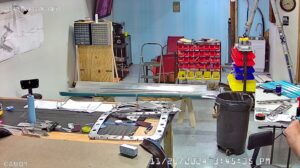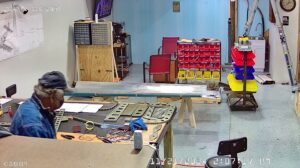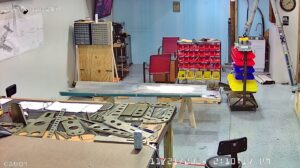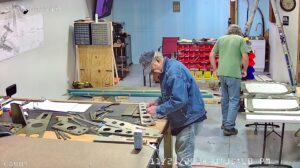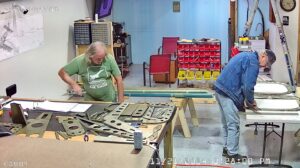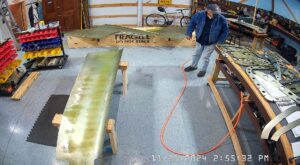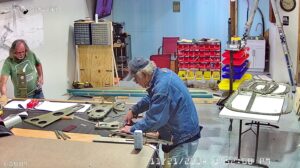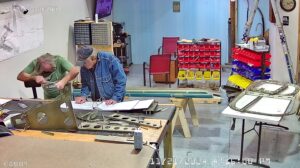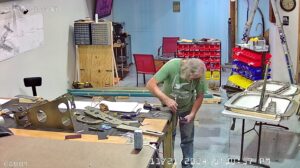DATE: 11-21-2024 TIME: 8:42 – 5:34 ~ 8:00
Today the assembly of the Vans RV-10 tailcone began on page 10-16 step 1 with the machine countersinking of the left and right longerons F-1032. There are a number of holes toward the aft end of the longerons that must not be countersunk as they are attachment holes to secure the F-1094 empennage gap cover in section 12. You will note that it does not say to not countersink the hole up at the F-1006 frame.
We had previously countersunk the longerons but I was concerned that the countersink was not consistently deep enough. If you discover this while riveting, it’s too late, so I went over every countersink after resetting the cage and testing on a piece of scrap, and then checking the holes with my little dimpled skin tester to make sure the dimple would seat properly.
After that there were other components to countersink so I continued through that process and double checked all the countersinking up to Page 10-17 step 3 where it says to prime. The snapshots here are me completing the countersinking and verifying the countersinking already completed. This included countersinking the F-1035 battery and bellcrank mount.
At this point I also double checked the bellcrank holes that needed to be final drilled were done and then went back to removing vinyl, scuffing and cleaning some remaining parts prior to priming the parts. As mentioned previously, the priming is done outside so there are no images of the priming process itself but I do have to “erect” the paint shop by putting up some tarp, tables and hooks every time before spraying.
The snapshots below show the parts as we returned them to the workshop. While my spraying technique needs a lot to be desired, it is improving so there is hope for me yet.
The next step was to start driving rivets into the various tailcone sub-assemblies prior to beginning the final tailcone frame and skin assembly process. EJ started with arbitrarily re-assembling the parts while I went to the manual and started with step 4 on page 10-17, riveting the battery and bellcrank assembly together per instructions.
You can see I used the rivet squeezer to set these rivets. That’s quite easy with the AN426D3 rivets, generally speaking, but the D4 rivets, especially the AN470s take a lot more effort. I regularly use a quick clamp to clamp the part I’m riveting to the side of my bench.
Next up was step 1 on page 10-18, riveting the F-1012A & B bulkheads, the F-1056 rudder stop brace and ther F-1012E tie down bar.
That was pretty much it for today.

